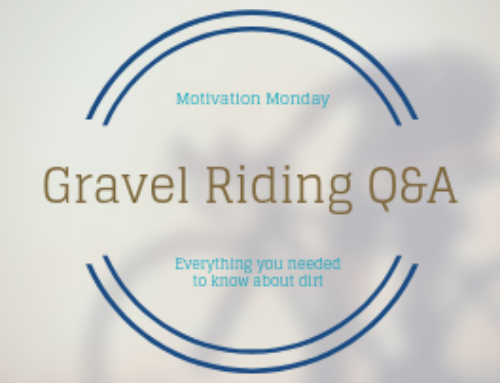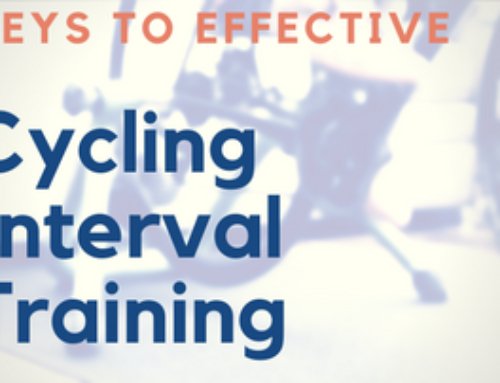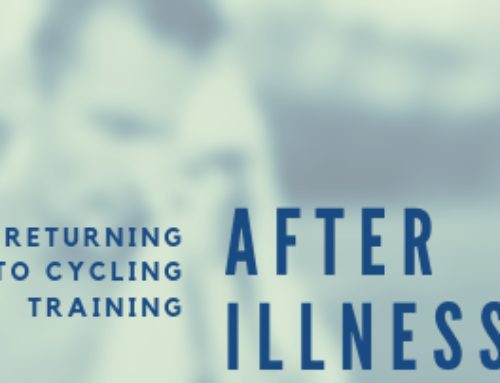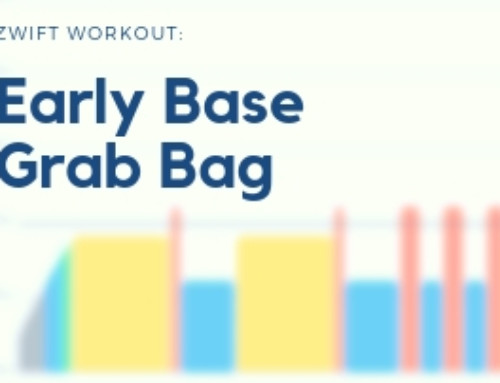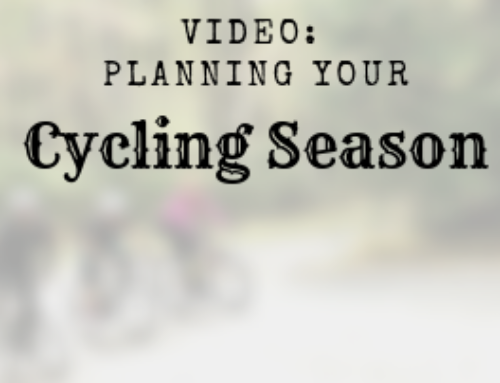Athletes are a notoriously hard working bunch, carving out a dozen or more hours each week to train for their chosen sport. Especially with cycling, there is a misconception that “more is better” and it often leads to overextending yourself. Remember that training stress stacks up on every other stress in your life: family, work, kids, paying bills, doing tasks around the house, etc. It's easy to turn a blind eye to the stress you deal with every day and focus solely on your training stress, but in reality, you're doing yourself a disservice.
This is generally the reason the busiest athletes find themselves stuck in an every declining spiral of training, declining performance and training harder, hoping to reverse the trend. Overtraining is a condition where the body is taxed beyond it's ability to recover, and is a very real condition that I see in a certain percentage of athletes. And yes, it's mostly the guys who get up at 4AM to train for 2 hours, get to work by 7AM, work hard all day, get home by 6PM only to eat, walk the dog, spend time with kids and go to bed late.
Then they repeat it the next day.
And the next day, and the next, over and over.
When performance starts declining, typically they add more training, maybe an after-work session or a longer morning session, hoping to see the trends reverse and performance to climb again. Usually, it doesn't work, overtraining sets in and suddenly, they've dug a deep hole they're stuck in.
In today's podcast I'll discuss the signs and symptoms of overtraining as well as some of the ways to dig yourself out of the overtraining hole if you find yourself there. Don't forget to leave comments below or on the Tailwind Coaching Facebook page, don't forget the coupon code at the end of the show notes and don't forget to share with your friends by clicking the bubbles on the left of the page!
Podcast: Play in new window | Download (Duration: 46:41 — 64.1MB)
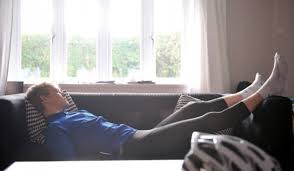 Podcast Show Notes:
Podcast Show Notes:
I encourage you to listen to the podcast as you check out these show notes for a more thorough understanding of overtraining and how to prevent it. Click through to the rundown of the show and the show notes:
Announcements and Overtraining Definition
@ 0:0:16 – The GAS (General Adaptation Syndrome) by Selye (link) and discussion of HRV variables during the different stages of GAS.
Stage 1: Alarm Stage – When the body senses some kind of stress upon it, activation of the sympathetic “fight or flight” response takes place (causes the body to be ready to work hard/exercise.) Stress hormones such as cortisol and adrenaline are released. The body enters a catabolic state, ready to react to danger.
Stage 2: Resistance or Overreaching Stage – After the initial burst of stress and resolution of the acute event, the body shifts into repair mode. The body is typically weakened at this point. This is the adaptative phase where the body tries to rebuild (typically stronger than it was before) in anticipation of further stress.
Stage 3: Exhaustion Stage – With persistent stress, the body can't adapt any further. It begins to break down. Illness or injury typically follows.
Signs of Overtraining
Overtraining can be evaluated through physiological measurements, but is typically diagnosed through signs and symptoms combined with evaluation of your training history. Experiencing any number of the following may indicate an overtrained status:
- You have a washed out or burned out feeling day in and day out.
- You feel tired (not just the “I stayed up late last night” tired, but really, truly “I need coffee just to stay awake and walk down the hall” tired.
- You are grumpy and experience sudden mood swings that are uncharacteristic
- You become irrational in everyday situations
- You feel a lack of energy for other activities (family, friends, etc)
- You suffer from depression (specifically depression that can't be traced to disappointing results or other life circumstances)
- You have a decreased appetite despite continuing to train heavily
- You get headaches more frequently (or you get headaches if you've never had them before)
- You experience an increased incidence of injuries
These are the 3 big signs and symptoms of overtraining, and I've noted that, especially together, they are almost a slam dunk for diagnosing an overtrained athlete:
- You have trouble sleeping (again, not the type due to having a couple of drinks and staying out late, but constantly waking at night without provocation.)
- You feel a loss of enthusiasm for the sport. (This is a dead giveaway since you're training to succeed in this sport!)
- You experience a sudden drop in performance despite continuing or increasing your training load.
Physiological Signs That You're Overtraining
@ 0:28:33
HRV is a great way to determine training status. Using apps like Sweetbeat and a Wahoo Tickr you can get daily HRV information. Typical HRV is high with sympathetic and parasympathetic activity in a specific ratio (somewhat varied person to person, so a baseline measurement is important.) It's important to keep a training log (and sleep log) and refer to it in order to determine if HRV changes are due to stage 2 overreaching or true recovery.
Testosterone/cortisol ratio is a very solid marker of overtraining status. During periods of intense training, the body raises cortisol in order to break down unnecessary tissue (more tissue means more energy requirements) and provide more energy substrate availability. Testosterone (an anabolic hormone) is decreased since the body is in a consistent “fight or flight” sympathetic response and believes it is unable to rebuild tissue fast enough. The resulting low testosterone/cortisol ratio is a great way to determine overtraining status.
Sedimentation Rate (known as Sed rate) and the more specific C-reactive protein are biomarkers that can determine overtraining status when combined with other metrics such as a training and sleep log, test/cortisol ratio or physical signs and symptoms. These markers of inflammation will be elevated when overtrained because the body is unable to combat the inflammation present during the recovery process. When recovery is outstripped by training volume/intensity, chronic inflammation sets in and can be seen in these tests.
Increased HR sub-threshold or inability to raise HR when suprathreshold can also be an indicator of overtraining status. If you're finding that you are doing sweetspot intervals or some other sub-threshold intervals and your HR is significantly higher than usual, you may be a little bit overtrained. The same goes with an inability to get HR up for suprathreshold intervals like VO2 max intervals. Generally this is because sympathetic tone has dropped from constant sympathetic overstimulation. Basically, the body can't support the constant stimulation and begins to deteriorate.
How To Recover From Overtraining
@ 0:35:25
If you do find yourself stuck in an overtraining hole, there are a couple of ways of digging out of that hole. Remember that it won't be easy: you'll have a lot of recovery to do and you'll probably have to cut your riding back a bit.
- Have a recovery day more frequently: you can still do a little riding, but spend more time resting.
- Take a full week off (literally hang your bike up and don’t even look at it)
- Get a massage, use compression garments, and/or elevate your legs
- Use water therapy, (hot/cold contrast), or go for a swim which lets you move around without putting any pressure at all on your body
- Eat well, get to bed early, stay hydrated and avoid alcohol
- Perhaps do something different if you need to exercise (walk the dog, go for a jog, go to the gym, etc.) it's also good for your psychological outlook as well.
- Utilize a cycling coach to help you manage your training, recovery and plan reasonable goals.
Don't forget to sign up for the Tailwind Coaching Newsletter to get my best coaching tips delivered to your inbox, along with a free bonus training plan, updates, and exclusive discounts.
If you enjoyed this episode, please do me a favor and head over to the Tailwind Coaching Podcast on iTunes and rate it 5 stars. A positive review helps the podcast move up the ratings, reach more listeners, and help more people get stronger, faster and fitter. Don't forget to post any questions to the Tailwind Coaching Facebook page, on the Tailwind Coaching forums, contact me via email or leave a comment below. Don't forget to support our sponsors and help to keep this podcast free, help me to get this information to more people and help grow the cycling community.
With the northern hemisphere's cycling season winding down, you can think about riding cyclocross or settle in and start building strength for the upcoming season. If you're in the market for a complete training solution, you can pick up your training plans by checking out my modular training plans in my online store. Let me help you build towards your best ever season with my season long training solutions and modular plans!
[wdsm_ad id=”5402″ class=” aligncenter” ]

